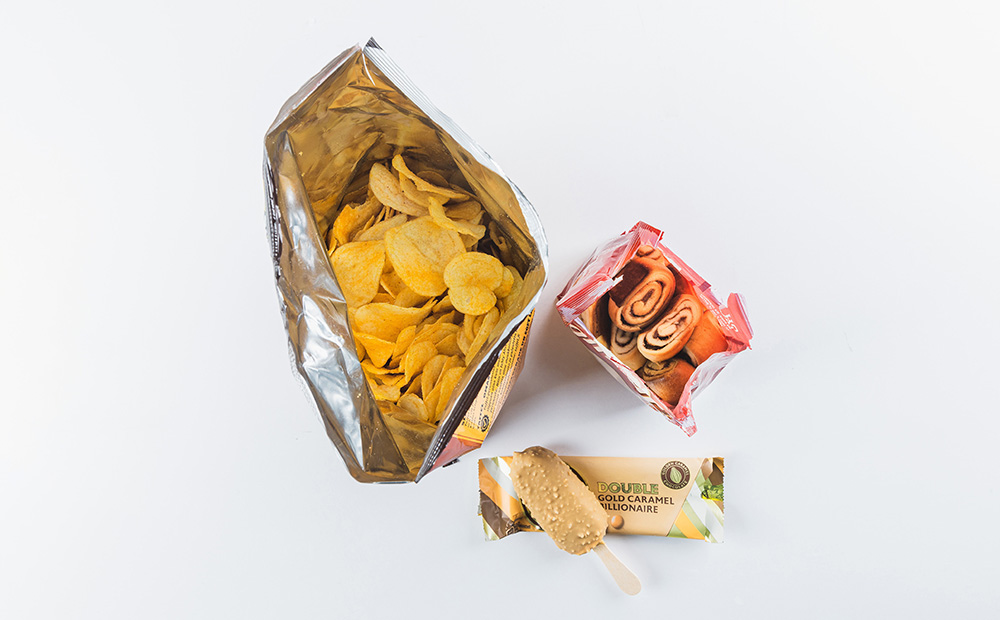Rinki finds out: How to identify SUPs

Rinki has received a lot of questions from companies with producer responsibility for packaging about how to identify SUPs. Is a particular packaging an SUP product or not? When faced with packaging that she is not sure about, Kesko’s Development Manager, Tiina Kotipelto, explores the issue by asking herself two questions:
1. Is the product a single-use food or beverage packaging and does it contain plastic?
2. Is the food eaten straight from the packaging without it requiring any further preparation?
If the answer to both questions is yes, Kotipelto takes a look at the size of the packaging.
For example, if a tray for fruit or berries does not contain more than 500 grams of the produce or if the capacity of a crisp bags or beverage container, for example, that is made of flexible material does not exceed three litres, it is a single-use plastic product.
“These two questions and the examination of the package size go a long way when it comes to identifying SUPs,” says Kotipelto.
What kind of SUPs are the most difficult to identify?
Desserts and ice creams have been the most problematic individually packaged products for companies to identify.
A plastic cup for trifle, for example, is an SUP product, but if it’s sold in a unit that has more than one cup, then it’s not. A one-litre carton liquid packet for custard is not an SUP product either.
The problem with ice cream is that the three-litre or 500-gram rule does not apply to it.
A wrapper for an ice lolly or ice cream cone that contains plastic is an SUP product, as is a cup for ice cream that contains plastic if its capacity does not exceed 300 millilitres.
“The problem with ice cream is that the three-litre or 500-gram rule does not apply to it,” says Kotipelto.
An ice cream tub (e.g. one litre) that contains plastic, a plastic box (e.g. 900 ml) and a cup with a capacity of more than 300 ml are not SUPs.
Products with water-based dispersion coating are SUPs
“At Kesko, we also waited for a decision on packaging and cups made using the aqueous dispersion method as well as on takeaway food containers without lids,” says Kotipelto.
We now have the answer.
Carton packaging and beverage cups that do not have a separate plastic layer but in which the impermeable layer is made with aqueous polymeric dispersions are SUPs.
Plastic carrier bags and small plastic bags offered to consumers at the point of sale are also SUPs.
Similarly, plastic trays with no lid that are used for ready-to-eat takeaway portions of food in shops and restaurants and that are covered with film, for example, are also SUPs, and this includes the film.
“However, film used at home is not a single-use plastic product, while single-use cups sold to consumers in grouped packaging are,” explains Kotipelto.
Plastic carrier bags and small plastic bags offered to consumers at the point of sale are also SUPs.
Reporting of SUP packaging to start in 2024
Further instructions from the European Commission and new guidelines from the national authorities may bring changes to the definition of single-use plastic products in the future.
“There is a very good, up-to-date list (in Finnish) on the Rinki website. We also collaborate closely with Rinki on other issues. Rinki has great customer service and responds quickly to our enquiries,” says Kotipelto.
Starting on 1 January 2023, companies will have to collect data on all single-use plastic products that they place on the market, and must submit the data in early 2024.
SUP products will be reported to Rinki by the company that bears producer responsibility for the packaging in question and that, therefore, also submits the basic report for the packaging to Rinki.